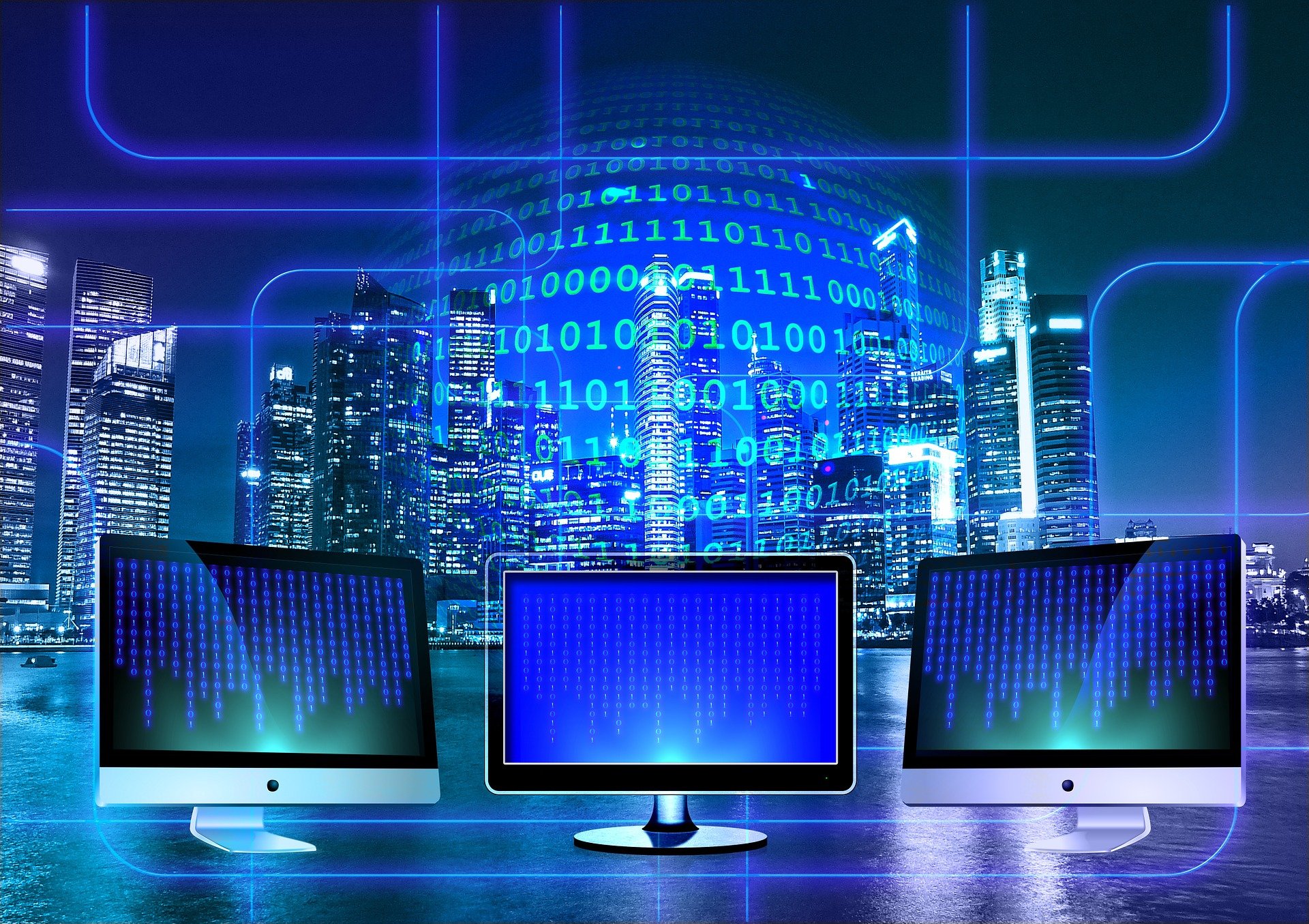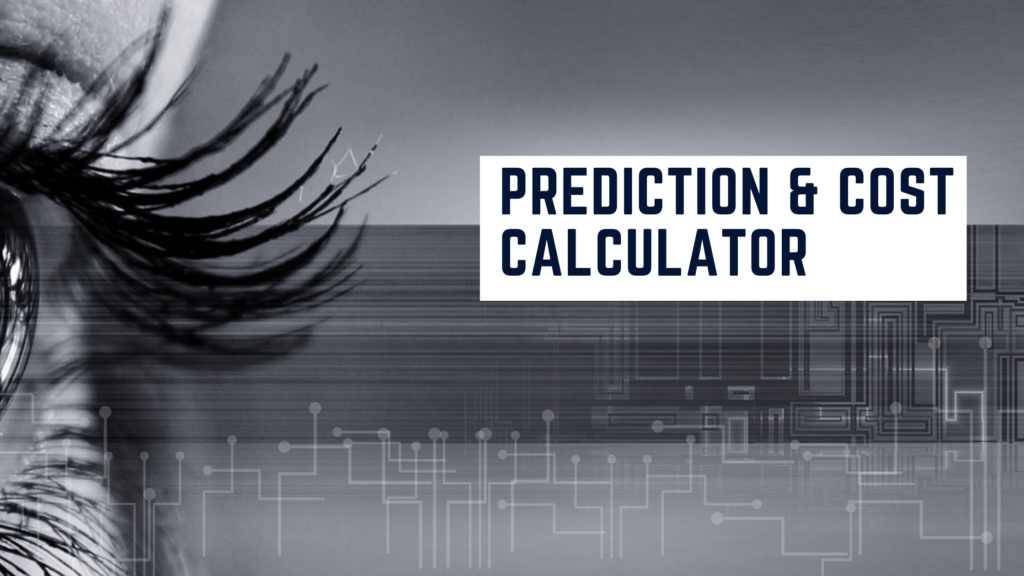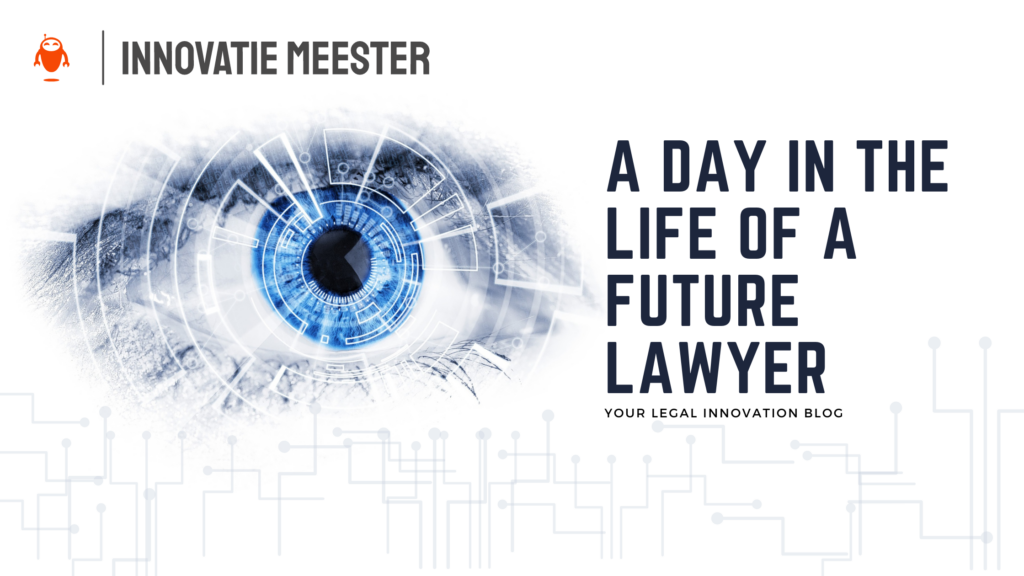Imagine 2030…
Imagine the year 2030 and you – a lawyer aged 40-something – wake up in the morning with screaming kids around you (no, not all things change…). You get out of bed and head for the bathroom.
Your Virtual Assistant: Donna
Displayed on your bathroom mirror, your Virtual Assistant, called Donna, tells you what your day looks like and reminds you of your appointments and tasks. Your workday starts at 08:00 with a 15 minute digital team meeting while you are still at home. The video meeting, that is displayed automatically on one of your screens, is chaired by Donna. Since the introduction of the Virtual Assistance Service, the average number of meeting hours of a lawyers day dropped with 40%. And more importantly, all meetings start and end in time and are highly structured. Transcripts and summaries of all digital meetings are automatically generated using the latest Natural Language Processing (NLP) software, and are available with smart search in your personal (digital) meeting library.
Future Lawyers Academy
Today is your day at the office, yes a real office in an office building, where you go twice or three times a week. After the digital day start, you commute to work using your second-hand Van Moof. That is a bike where you actually have to pedal yourself, albeit with a little help from a battery. At 09:00 you are scheduled to kick off the Future Lawyers Academy of 2030, a training program for first years associates to get familiar with and enthusiastic about all legal technology that is used or in development at your firm. Today’s topic is the ever growing amount of data and you will be showcasing some case examples where data science has helped you and your clients to reduce manual labour and add quality to your work.
This is now the fifth year of the program, and so far results are great: overall efficiency has improved with 30%, because of the use of legal technology, and turnaround times of data rich projects are reduced to days instead of weeks. The program not only teaches new skills to the young lawyers, that they can use in their daily work, it also enhances adoption levels of technology by senior lawyers, as they are shown by the younger generation how technology is helping them.
The Digital Court Room

After the training you quickly drop by the Digital Court Room in your office. There is an important international arbitration hearing this afternoon and the team is rehearsing. You had a small role in the case. In the room, one of the older partners is swiping on a small tablet, showing carefully selected pieces of evidence on the different screens in the Digital Court Room. Every possible argument has been analysed by the arbitration team and client, and is connected to a fully designed presentation pack with back-up slides and expert testimonies, all ready to use at the partners fingertips.
There are 3 Digital Court Rooms at your office, all connected to so-called war rooms, where the litigation team and clients are working behind the scenes during a hearing to support the lawyer that is presenting. Paperless off course.
Smart Contracting
At 10:30, you have a video call with a client and your team about your clients smart contracts. Since 2026 this client has been working on making all his contracts smart, in a series of projects, using your firms smart contracting platform. You have advised him on these projects since the beginning and you and your team of legal engineers have been working with your client to draw up all contracts in the platform. A few months ago, there was an important ruling about smart contracts that could impact a large proportion of your clients smart contracts. Last week, you and your client decided to review all contracts. Today, in the follow up meeting, your legal project manager kicks off the meeting, showing the digital report of the contract review. There are 1247 contracts at risk, with counter parties in 13 different countries. During the meeting you discuss next steps, responsibilities, priorities and fall back language. Donna, who has been listening in the background, has automatically summarised the meeting and highlighted the decisions and actions that were decided on. You and your client confirm and the summary and actions are saved and uploaded in the client platform.
Prediction & Cost Calculator

At 11:30, Donna informs you that your appointment has arrived. You have a face-to -face intake meeting with a new client that wants to know her litigation chances in a commercial dispute. After the hospitality robot has served some coffee and tea, you kick off the meeting with the Prediction & Cost Calculator. Following the calculators questions, you upload information that it uses to compare the case to all available case law and precedents in the database. The tool predicts that – based on the given information – the chance of successful litigation is between 36 and 44 per cent, depending on the appointed judge and the expected arguments of the counter party. And the costs of litigation are estimated between 22.000 and 31.000. You and your client discuss alternatives and based on this cost analysis and success prediction, the client decides to sleep on it.
Lunch Carousel – Connection time
At lunchtime you head to the Office Restaurant. Once a month, lunch is arranged via the Lunch Carousel, a tool that randomly selects 4 employees that are in the office to have lunch together. The Lunch Carousel was the winner of the first innovation challenge in 2023, a challenge for innovative ideas aimed to re-connect people after the fifth and last Covid-19 wave in 2022. It has been there ever since. Today you have lunch with a data scientist, a senior corporate lawyer and a legal counsel from your clients legal department, who is seconded to your firm to enhance collaboration. The lunch Carousel not only randomly selects people, it also provides a set of topics to trigger out of the box thinking around valuable topics. This lunch, your topic was “A four day workweek”, which was interesting because the client already introduced a four day workweek back in 2027.
Just some time behind the desk
After lunch you decide to head to your private office. Your personal dashboard quickly informs you about your tasks and shows you the most important operational numbers. You zoom in on the review numbers: review time is reduced with another 15% compared to the month before. Your firm invested a few years ago in a new AI tool that uses machine learning and an automated playbook with a connected clause library to speed up contract drafting and contract negotiation. Your firm is in the fourth phase of the release plan. Last month, the Third Party Paper Tool was updated with new features and is showing great results.
Your dashboard also shows the deals you are working on and their status. At the moment you have one large deal that is about to close. The automated checklist in your deal platform informs you that all contracts have been electronically signed and uploaded in the platform. After you have reviewed the collected signature pages, you create the final bundles with just a few clicks and share it directly with your client and other stakeholders through the platform.
One of the larger tasks of today is to assess facts in a litigation case of one of your clients that was uploaded yesterday. The litigation platform automatically identified, categorised and extracted all events from the uploaded files and created a chronology of events and key facts, so your task is to assess its findings. The platform also performed a digital crosscheck on all data and identified similarities and discrepancies for you to review further. As the system is still learning to improve this feature, you need to carefully assess these findings and give feedback to the tool. You tick off all messages and review requests which automatically drops a message in the inbox of the litigation teams, so they can move the case to the nest stage.
Time Capturing
Before you leave, you need to send out some “normal” email messages to your traditional clients. There are actually still dinosaurs out there that do not use communication platforms, can you imagine? Email in 2030, like if you would use a fax machine…
When you close your office, Donna recaps your day, informing you what you spend your last 24 hours on and for which clients. Although the billable hour doesn’t exist anymore, capturing the time spend on cases and clients is still very important for data analytics and the generation of fixed fees. And most of the time Donna is right in her estimation. You confirm and head home. It’s a 9 to 5 job after all.
Final remarks
Off course, this is all fun and imagination. But, most of these ideas are actually already available or in development. And all imagined solutions are targeting real problems in a lawyers life today: unstructured and long meetings, sending and chasing parties for documents or signatures, frequent status update calls and emails, manually written transcripts, minutes, summaries, checklists and action lists, manually reviewing thousands of documents, manually reviewing third party paper and manually drafting of legal documents, writing time, et cetera. I believe in a future where law firms will become more hybrid, where lawyers work data-driven and with the right technology for each job, and with technology experts to add value to the work they deliver to their clients, without spending valuable time on non-value added work.
This is the journey we are all in. This is what Legal Innovation is about.
Tjeerd van Ginkel is a freelance innovation consultant who is on a mission to help to change the legal industry. Curious to find out more? Schedule an introduction call via the button below, or fill in the contact form.
If you want to receive more of these stories, subscribe here to receive more Legal Innovation Inspiration:
